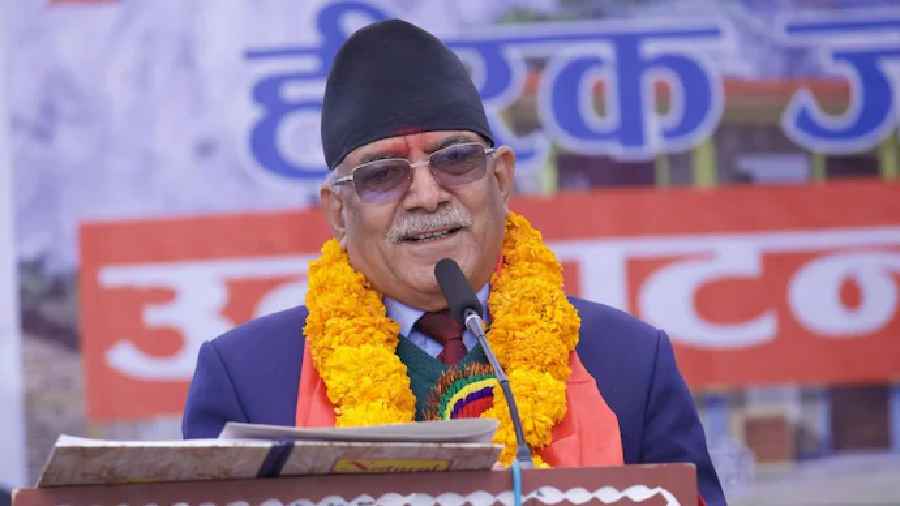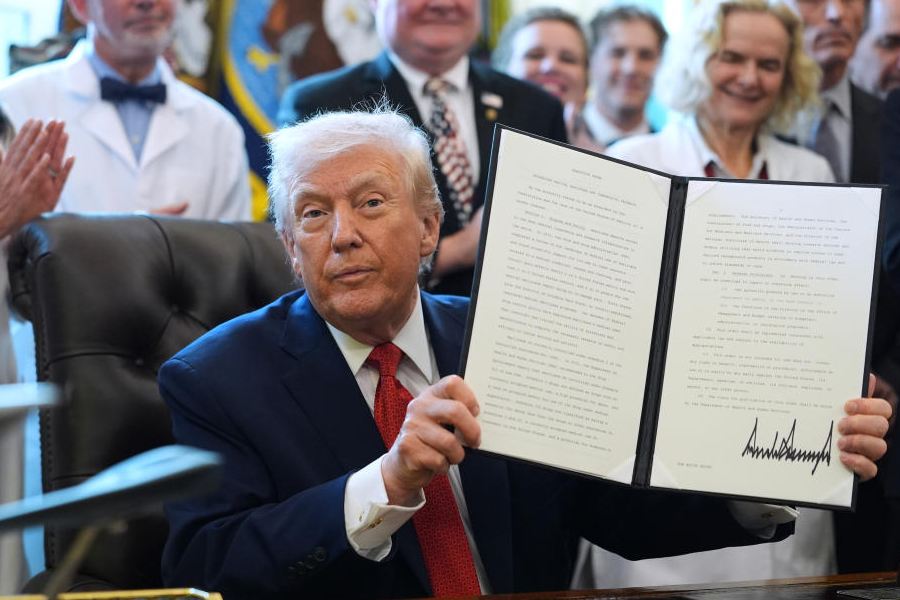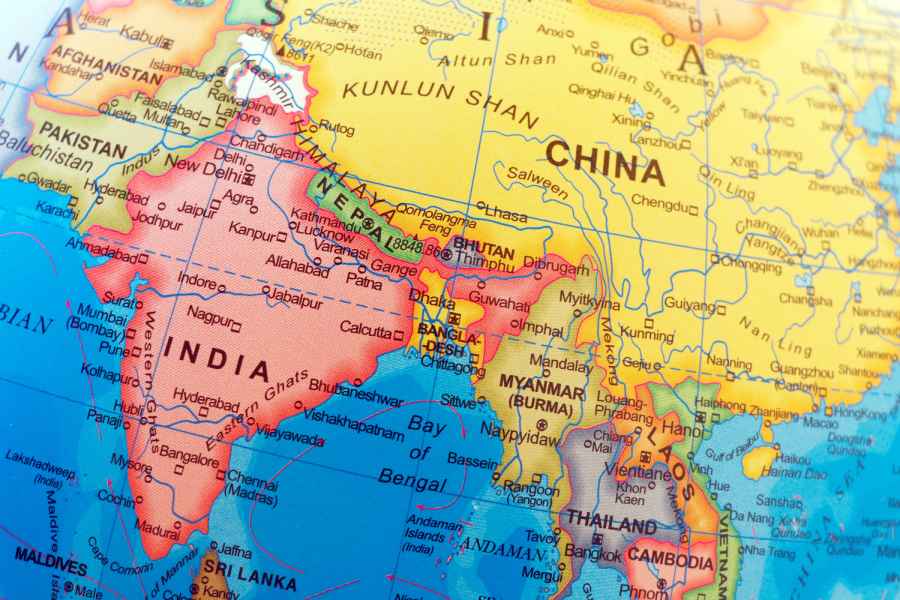Kathmandu is emerging as a geopolitical theatre of the superpowers, requiring India to be nimble-footed to ensure that it is not elbowed out by the big boys.
Indian foreign secretary Vinay Mohan Kwatra is scheduled to reach the Nepal capital on Monday in an outreach that marks the first high-level visit from New Delhi after Pushpa Kamal Dahal (Prachanda) took over as Prime Minister late last year and at a time the Himalayan country is preparing to host a third senior US official in less than three weeks.
Afreen Akhter, the US deputy assistant secretary of state for South and Central Asian affairs, will be in Kathmandu a day after Kwatra lands at the Tribhuvan International airport. The two other visitors from the US since Prachanda took charge were Samantha Power, the administrator of the US Agency for International Development (USAID) and also a member of the National Security Council, and Victoria Nuland, US deputy secretary of state for political affairs.
“The frequency of the visits of senior US officials to our country just after the elections is very interesting.... Probably, New Delhi is also taking these visits with utmost seriousness. It remains to be seen how they react,” Surendra K.C., a retired professor and a political analyst, said.
America’s keen interest in Nepal became clear last October when it fast-tracked the appointment of Dean Thompson, deputy assistant secretary, South Asia, a senior officer, as the US ambassador to Nepal after Randy Berry completed his four-year term.
Visits by Indian foreign secretaries to neighbouring countries after a new Prime Minister takes charge are a routine affair in comparison to the US outreach to Nepal. But multiple sources in Kathmandu said that the trip of Kwatra, who had served as the Indian ambassador to Nepal before assuming the charge of the foreign secretary in May 2022, is much more than a formality.
During his 48-hour visit to Kathmandu, Kwatra will review the progress of India-funded projects, hold meetings with Prachanda and some of his senior cabinet colleagues and call on President Bidya Devi Bhandari.
Sources in Kathmandu said they were waiting to see whether Kwatra would hand over any invitation from Prime Minister Narendra Modi to Prime Minister Prachanda to visit India.
Barring 2008 — when Prachanda visited Beijing for the inaugural ceremony of the Olympics, which caused a lot of heartburn in India — New Delhi has always been the first port of call of any Nepal Prime Minister after taking guard in Kathmandu.
“The Indian establishment is desperate to retain that tradition at a time when the US is warming up to us and that’s why the foreign secretary is here,” said a source in the capital amid speculation that US President Joe Biden has invited Prachanda to take part in the Summit for Democracy in end-March.
While it could not be confirmed whether Prachanda — who is expected to be busy with the presidential elections in the country till the second week of March — has got the US invitation, the possibility of Modi’s request for a meeting in Delhi has reopened some wounds in Kathmandu.
“Our leader (Prachanda) was in India in July 2022, and a meeting between him and the Indian Prime Minister was scheduled.... They, however, did not meet as it was cancelled in the eleventh hour for some unknown reason, and it was a face loss for him,” said a source close to Prachanda, who is also the chairman of the Communist Party of Nepal (Maoist Centre).
In a dramatic turn of events after the elections, Prachanda broke his alliance with the largest party, the Nepali Congress, and struck a power-sharing deal with the K.P. Sharma Oli-led Opposition party, the CPN (Unified Marxist-Leninist), to lead the government for the first half of the five-year term.
“Now that he is the PM, there is no surprise in the Indian establishment trying to reach out to him,” added the source.
For years, India and China had tried to play a role in the Himalayan country because of its strategic importance. But the past few years have seen increased US interest in Nepal as part of its Indo-Pacific strategy intended to counterbalance China.
Some observers think that as Prachanda and Oli have had a good relationship with Beijing in the past, the Biden administration has begun engaging more with what is perceived as a China-friendly government to ensure that its geo-strategic interests in the Himalayan region are not compromised.
The US is in the process of implementing the $500-million Millennium Challenge Corporation (MCC) —after several rounds of discussions — with the Government of Nepal, which aims to maintain road quality, increase the availability and reliability of electricity and facilitate cross-border electricity trade between Nepal and India. The two countries have also been discussing a proposal to engage in a State Partnership Programme (SPP) between the Nepal Army and the United States National Guard.
“The Chinese have always been opposed to the MCC and the SPP.... The US authorities are keen to expand the scale and the scope of MCC and are here to assess the mood of the new regime,” said another source in Kathmandu.
Like America, India does want to keep Kathmandu decoupled from Beijing. But New Delhi cannot afford to turn a blind eye to the US overdrive in Nepal.
That means Kwatra’s Kathmandu task is challenging: ensure that the new regime in Nepal keeps India ahead of the two warring superpowers, China and the US, in the pecking order.












